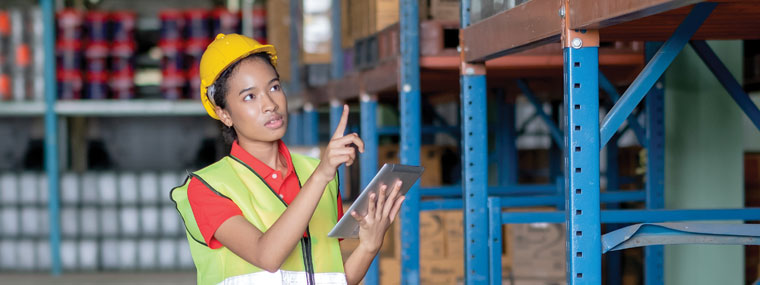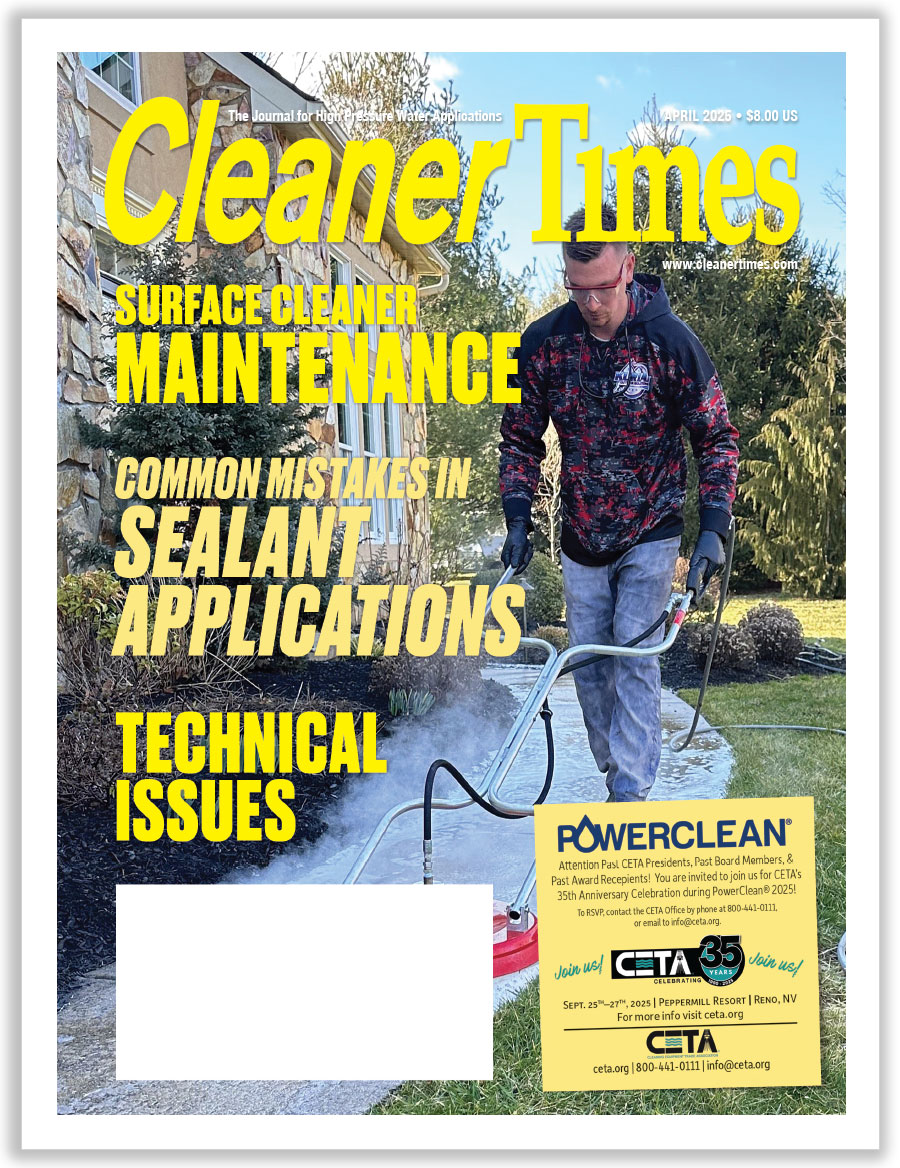
Checks and Balances in Equipment Manufacturing
By Diane M. Calabrese / Published February 2021

Equipment manufacturers make products that accomplish work.
The U.S. Bureau of Labor Statistics (BLS) defines industries. The machinery manufacturing subsector (NAICS 333) produces engines, general purpose machinery, and the like—or, much of the equipment in our industry.
Application of mechanical force—via gears, levers, etc.—to do work is evident in all the end products, or equipment, created by the manufacturing subsector. Processes used to make equipment include forging, stamping, bending, forming, and machining to shape metal pieces, as well as welding and assembly.
Design/engineering of a piece of a machine just begins the process of equipment manufacturing. Success in making an excellent product requires monitoring every link in the chain.
Quality raw materials, well-made components, and capable employees are some of the many links. To ascertain that not one of the links is weak, a manufacturer must use a system of checks and balances.
There are many methods for achieving quality outcomes for products. There are also many philosophies regarding how to refine methods. Methods and philosophies will be covered in turn below.
But here, we begin with expert advice from a member of our industry, Curtis Braber, who is president of BE Power Equipment in Abbotsford, BC, Canada. He recommends keeping the employee centered in the picture.
“Although all areas of manufacturing are important, employee training is the most crucial,” says Braber. “People make the difference in a quality piece of power equipment. At our company we focus heavily on training and have SOPs [standard operating procedures] for each step, and safety is always front of mind.”
When deployed, employees meet exacting expectations. “On the production lines it’s the time spent double- and triple-checking connections, ensuring a perfect fit, and testing the equipment that gives the dealer and ultimately the consumer the confidence in our product,” explains Braber.
Every part of the manufacturing process is crucial. Benign neglect of a seemingly small part of a process can cause a problem.
“As the world develops and supply chains become more global, it is important now more than ever to have inbound quality control processes to ensure the components come in exactly to specifications,” says Braber. “At our company we have an inbound quarantine area for all external parts arriving.”
The quality assurance (QA) group takes it from there. “Quality control sheets are made for each product to allow our QA team to verify the consistency of the part,” explains Braber.
Trust but verify. “Products that are held to a safety certification, such as electrical products under CSA or UL, absolutely lend an extra layer of confidence in a supplier, as they are held to a higher standard,” says Braber. “But it still does not substitute for retesting or verification by the team on the manufacturing floor.”
Automated controls do not supersede attention by employees. “Here we still rely heavily on human assessment,” says Braber. “Checklists, tools, and documentation are helpful and used often but are still no substitute for human inspection.”
Methods
The NIST [National Institute of Standards and Technology] at the U.S. Department of Commerce is one of many federal-level entities committed to improving manufacturing. Much of its focus is methods. (In the next section, we consider the involvement of the Environmental Protection Agency, which has a keen interest in reducing waste.)
Both the NIST and EPA aim to strengthen the manufacturing sector. At the macro-level they are part of the interplay of checks and balances. Their check is on efficiency—can energy use be cut, can materials be reused, etc. The balance they want to maintain is between quality and efficiency.
NIST offers a Manufacturing Cost Guide. It is one of many tools researchers tap to analyze manufacturers in a sector and make recommendations to them. Can manufacturers spend less on engineering, steel, or energy?
The NIST examines possibilities, and from them, it makes recommendations of what might be done. Wireless communication in factories is a big area of innovation. Eliminating cables and wires streamlines a facility. It also enhances safety.
Yet wireless communications may be less dependable. Harsh conditions inside a facility may disrupt them, for example. RF [radio frequency] can be disrupted by reflective surfaces, absorbent surfaces, steam, and more.
On balance, wireless may also be riskier. With cybercrime sapping enormous sums from manufacturers, any move that makes it easier for hackers to enter a network must be weighed with care and prevented. (NIST reported manufacturers lost somewhere between $8.3 billion and $36.3 billion to cybercrime in 2016; it notes aggregating data on losses is difficult.)
 NIST is also considering the viability and practicality of additive manufacturing (aka, 3D printing). For now, it seems best deployed when small batches are required within a centralized manufacturing process.
NIST is also considering the viability and practicality of additive manufacturing (aka, 3D printing). For now, it seems best deployed when small batches are required within a centralized manufacturing process.
As manufacturers source materials from more vendors, they must enact checks to protect patented and other proprietary information. A design or engineer sending a plan via a network is no more protected from theft than if he or she used a courier to carry the plan across town.
NIST has been working with blockchain methods to protect manufacturing data. (Yes, it’s the Bitcoin recordkeeping tool.) The checks built into blockchain transmission with time stamps, sender identifier (cryptographic hash), and sequencing ensure the design put together at the receiver end is the one sent.
Much equipment in our industry serves infrastructure needed for critical functions, such as food processing (e.g., cleaning processing facilities). As such, it falls under the critical manufacturing sector, according to CISA [Cybersecurity and Infrastructure Security Agency) under the Department of Homeland Security.
CISA offers guidance and information to critical manufacturers about how to detect and eliminate inside threats from individuals or via the cyberworld. Get to know CISA.gov.
Philosophies
EPA’s interest in how best to attach checks and balances to manufacturing is tied to environmental benefits that may accrue from lean approaches. Lean philosophies recognized by EPA stand at seven in December 2020. Access full descriptions of them via https://www.epa.gov/sustainability/lean-thinking-and-methods-introduction.
Many members of our industry have already committed to a lean philosophy in manufacturing. Continuous improvement, deep engagement of employees, and orderliness that reduces waste and protects the environment are common to the philosophies.
In more general terms, the lean approach to manufacturing moves companies away from producing first and trying to sell later. It moves them toward targeted production.
According to the EPA, Kaizen may be the foundation for the other six philosophies considered lean. Kaizen, a Japanese word for “improvement,” puts great emphasis on individual efficiency and involvement. Individuals identify wasteful activities/methods from every vantage (i.e., their unique perspectives). Then, team members work quickly to eliminate profligate ways.
Competent employees intuitively follow Kaizen every day. In fact, they typically skip rigid steps, such as asking “why” five times to get immediately to the answer. It’s about finding the root cause.
Toyota is credited with the ‘five whys’ method. Many consider such a path to cause overkill. Others see it as rigorous. It’s not for everyone.
As for the six derivatives/competitors to Kaizen, they are 5S, cellular manufacturing, just-in-time/Kanban, TPM [total productive maintenance], Six Sigma, and pre-production planning (3P). Again, the summaries below are made based on the full accounts at the above-cited EPA link.
An orderly workplace is the objective of 5S. It’s analogous to the approach taken to cleaning out the garage or basement. Superfluous stuff goes. What remains is better organized—tools together, laundry detergent lined up on a shelf, etc. We get a firm tally of what’s available so no buying nails already owned. The entire space is cleaned. Ease of movement is enhanced. And so on.
Cellular manufacturing speeds the production of a single product by moving toward one-piece flow. By another name, it might be known as custom builds because it allows for changes in particular products to be built in from the start. Balancing cost to manufacture and item price can be a challenge, even though quality of products may be very high.
Just-in-time/Kanban does not differ much from cellular manufacturing. Basically, inventory controls (both in-house and advance information obtained from communication with prospective buyers) are tightly linked to a cellular manufacturing line.
TPM puts the focus on an intimate tie between an employee and the machine he or she is running. The employee takes care of routine preventative maintenance and can resolve many breakdown issues without assistance. (TPM is a method owner-operators of logging or road-building machines apply every day.)
Six Sigma deploys advanced analytical methods to make efficiency and quality gains in products. Among things analyzed are frequency of defects, longevity, and tolerances.
Finally, the 3P philosophy says, let’s build efficiency and environmental compatibility into a product during the design stage. For example, does a client have a need for a pressure washer that can be easily tied to a wastewater collection system or a water recycling system? Custom design-builds have been going on as long as there has been building. But 3P formalizes it.
Because they ask for clarity and encourage thoughtful action, lean philosophies add checks and balances to equipment manufacturing (and other processes). That is, as long as they remain subordinate to function (making a product).






